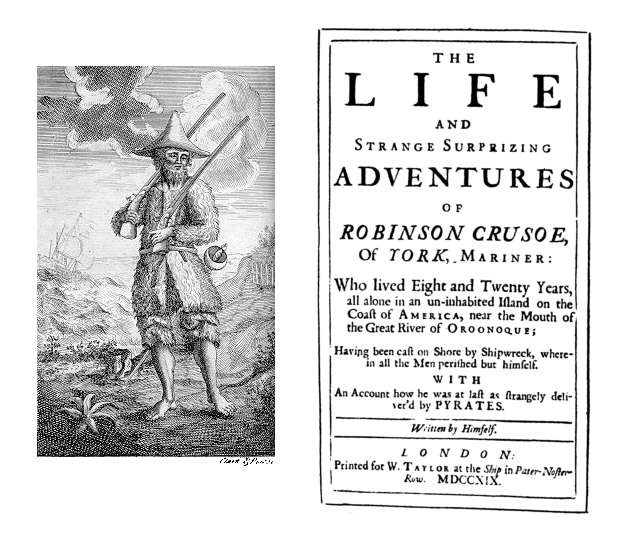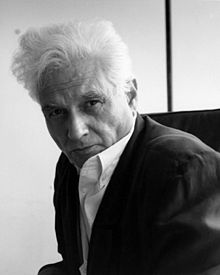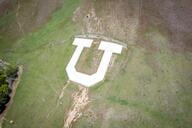You have /5 articles left.
Sign up for a free account or log in.

iStock, Wikipedia
The title of Lucas Wood’s paper to be given today at the annual meeting of the Modern Language Association is “‘All Ladies Cheat … Sad!’: Diffusing and Defusing the ‘Fake News’ of Courtly Adultery.”
The paper examines late-12th and early-13th-century French literature about the court of King Arthur, with a focus on a fictional device: a “magical drinking horn” that led everyone to tell the truth. The truths they told involved adultery, with seemingly everyone at court sleeping with those to whom they were not married. Wood, an assistant professor of French at Texas Tech University, said he found the concept of fake news illuminated the themes and impact of these texts. Those in court needed to laugh at the fake magical horn, even while knowing that adultery was much more widespread than anyone wanted to admit in public.
“The label ‘fake news’ specifically makes it possible for something to become common knowledge and denied at the same time,” Wood said. “These were explicitly fictional narratives, which are no doubt communicating on social truths at the time.” People felt the need to denounce the narratives as untrue, even if they were partially true, he said. Those reading these literary texts tended to believe that all the men in court were brave and all the women were beautiful and good -- even if evidence suggested otherwise, he said. It was a challenge to sort out desired truths from the real thing.
Scholars of French literature discussed (decades before the current fake news phenomenon) the idea of faux-semblant (or false-seeming) reports in literature or nonfiction, Wood said. Drawing attention to what was true about accounts dubbed false may be relevant for today’s times, he said.
Wood’s paper is among many on fake news at this year’s MLA meeting, which opens today. There are sessions on “Fictionality in a ‘Post-Fact’ World,” “States of Insecurity: Digital Writing in the Post-2016 Election Era,” “‘Alternative Facts’ and Fictions,” “Fake News: Truth and Truthiness in the 18th Century,” and others, plus individual papers on these topics that are part of sessions with broader themes.
The papers will mix analysis of the way news has come to be defined today with analysis of the roots of fake news long before the 2016 election. Other sessions focus on literary techniques such as the use of faux-semblant in previous eras. Interviews with some of the scholars who will be presenting their work at this year’s MLA find many who are deeply concerned about the lack of distinction between fact and fiction in discussion of today’s current events. Some hope that scholars of fiction may be able to suggest ways for society to preserve those distinctions.

Michaela Bronstein, assistant professor of English at Stanford University, will be giving a paper called “Fiction as Fake News: Make-believe or Make-belief?” She hopes literary scholars can draw attention to the way identities of fact or fiction are “fluid.” Bronstein noted that Robinson Crusoe was originally viewed by many as nonfiction, and that the War of the Worlds radio broadcast was viewed incorrectly as news.
Scholars may need to remind the public that there is such a thing as factual news, she said.
“Do people browsing their Facebook feed, more than a year after the election, still encounter everything they read as fact?” she asked. “I’m not sure. I think of Sarah Huckabee Sanders, defending Trump’s sharing of the anti-Muslim videos put out by Britain First, who, when asked by a reporter, ‘Does it matter if it’s a fake video?’ responded, ‘The threat is real.’ People already read fake news as locally unreliable. They view it as pointing to an underlying worldview to which they subscribe -- or don’t. They accept the possibility, in other words, that it is fiction. But there’s still something unsettling, not about the fictiveness of fake news, but about the way it makes it more difficult to see anything as not fictional.”
Lauren Ravalico, assistant professor of French and Francophone studies at the College of Charleston, also will be exploring the way repeated statements that are false have in the past become seen as true. Her paper is “Does the Truth Matter? Philosophical Perversions of the Harem.” She looks at how accounts of harems in Persia and the Ottoman Empire -- generally false accounts based on little direct information -- worked their way into supposedly nonfiction works by French thinkers from the 17th through 19th centuries.
Information about harems was accepted as true because it conformed to prevailing Western attitudes about Muslims, she said. Then, and today, she said, “the more these stories get into circulation, the more they become objective reality.”
The Culture Wars and ‘Alternative Facts’
David N. Ben-Merre, associate professor of English at Buffalo State College of the State University of New York, helped to organize and will preside over a large discussion of “alternative facts” at the MLA meeting today. Ben-Merre said he thinks it is important to put the current discussions about truth and fiction into the context of several decades of culture wars. “I asked everyone not to spend their time going after one politician but looking at how the culture wars and theory debates of a couple of decades ago” are playing out in the discussions today, he said.

One irony is that, in many of those discussions, conservative commentators accused humanities scholars of the left of ignoring issues of truth. And Ben-Merre acknowledged that some may say poststructuralists such as the late theorist Jacques Derrida may have contributed to the current situation by questioning then-prevailing attitudes about what constituted truth.
Ben-Merre said he does not agree with that critique, although he expects it to come up at his session. “When Jacques Derrida is saying that A is really B and B is really A, we know the circumstances of what he is doing,” Ben-Merre said. “It’s not as threatening as when billionaires, when the president, when AM radio people are saying that global warming doesn’t exist, that evolution isn’t real.”
What can literature professors do to promote a respect for what is true? Ben-Merre said he isn’t certain at all, but he hopes to promote the idea of nuance. “We are in an age that likes to process things very quickly,” he said, and educators need to encourage students and the public to pay attention to what they are reading and to think about what is true, and the values underlying various pieces of information. This need not be political, said Ben-Merre.
“I don’t think the debate is between theory and non-theory and capital-T truth or not.”
Gayle Rogers, a professor of English at the University of Pittsburgh, was involved in organizing an MLA session on these topics sponsored by the association’s prose fiction division. He too said it was important to understand that the divide between fiction and nonfiction has long been evolving. Sometimes, he said, the truth is doubted. When early accounts of North Americans were discussed in Europe, many doubted they could possibly be true and assumed them to be fiction. And while science fiction is presumed to be fiction, Rogers said the best science fiction tends to be built on a believable premise, leading readers to think the story could become true, even if it is not true at the moment.
Rogers also endorsed the idea that literature professors need to teach people how to examine different kinds of information. Most people, of course, already treat different kinds of information in different ways, and yet they don’t think about it, he said.
When he teaches introductory literature, Rogers said, he does an exercise in which he displays for the class a menu and a poem. He said he asks students, “Why is it that you don’t look at the poem and say, ‘I’d like to purchase line seven,’ and why do you read a menu and not ask about the cadence and rhythm?”
What Is News?
 Philip Longo, who teaches writing at the University of California, Santa Cruz, said his paper will discuss some of the challenges of teaching students about source reliability these days.
Philip Longo, who teaches writing at the University of California, Santa Cruz, said his paper will discuss some of the challenges of teaching students about source reliability these days.
Longo said he worries about the “moralistic” rhetoric many use to discuss fake news, in which people say “facts are facts” and assume that will settle the issue.
That students don’t classify what they read as clearly “news” or “opinion” shouldn’t be blamed on President Trump rejecting news items with which he disagrees as fake, Longo said. While The New York Times still divides its content into news and opinion sections, online news sources such as The Huffington Post and Vox (not to mention sites like Breitbart) don’t do so, he said. Further, he said, students rely on news aggregators, and so pay even less attention to whatever sectional divisions even a place like The New York Times uses.
Writing instructors can encourage students to focus on sources and their reliability, he said. But they will do so in an environment in which many students “see everything as biased and fake” and “don’t believe anything.”
Helping students (who are also members of the public) understand distinctions ultimately is essential to academic values, he said. Without that understanding, he said, people may never understand “why a peer-reviewed paper has more credibility than a random website.”




